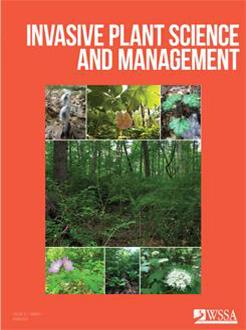In California, invasive grasses have displaced native plants, transforming much of the endemic coastal sage scrub (CSS) to nonnative grasslands. This has occurred for several reasons, including increased competitive ability of invasive grasses and long-term alterations to the soil environment, called legacy effects. Despite the magnitude of this problem, however, it is not well understood how these legacy effects have altered the soil microbial community and, indirectly, native plant restoration. We assessed the microbial composition of soils collected from an uninvaded CSS community (uninvaded soil) and a nearby 10-ha site from which the invasive grass Harding grass (Phalaris aquatica L.) was removed after 11 yr of growth (postinvasive soil). We also measured the survival rate, biomass, and length of three CSS species and P. aquatica grown in both soil types (uninvaded and postinvasive). Our findings indicate that P. aquatica may create microbial legacy effects in the soil that likely cause soil conditions inhibitory to the survival rate, biomass, and length of coastal sagebrush, but not the other two native plant species. Specifically, coastal sagebrush growth was lower in the postinvasive soil, which had more Bacteroidetes, Proteobacteria, Agrobacterium, Bradyrhizobium, Rhizobium (R. leguminosarum), Candidatus koribacter, Candidatus solibacter, and rhizophilic arbuscular mycorrhizal fungi, and fewer Planctomycetes, Acidobacteria, Nitrospira, and Rubrobacter compared with the uninvaded soil. Shifts in soil microbial community composition such as these can have important implications for restoration strategies in postinvasive sites.
How to translate text using browser tools
15 May 2019
Legacy effects of invasive grass impact soil microbes and native shrub growth
Brooke Pickett,
Irina C. Irvine,
Eric Bullock,
Keshav Arogyaswamy,
Emma Aronson
ACCESS THE FULL ARTICLE
coastal sage scrub
Harding grass
invasive species
restoration
soil microbial community





